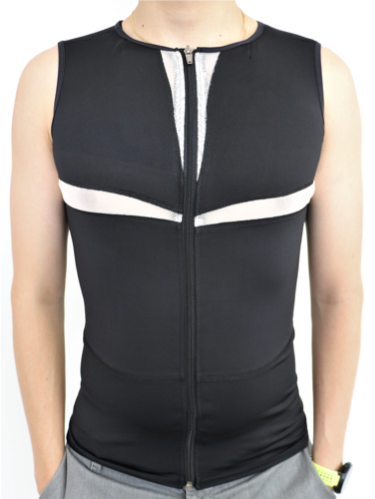Garment Design

The NEXT research team led by Dr. Jess Jur has developed an innovative garment design technique using fabric panels with varying mechanical properties to help isolate sensing regions on the garment without prohibiting body movement. Many competing biometrics garments rely on compression fabrics to maintain intimate skin-sensor contact. The addition of mesh panels in the garment design reduces the amount of compression fabric in the garment, making the garment more comfortable and useable.
The paneling design absorbs movement-induced garment displacement, which helps to isolate the sensing regions on the garment. Improved contact between the sensor and the skin reduces the noise commonly found in biometric signals. By improving the signal-to-noise ratio (SNR), fewer data processing has to occur on the garment circuitry, thus lowering power consumption – a primary ASSIST strategy toward self-powered wearable devices.
Furthermore, our integration strategies have evolved to allow for modularity in the sensor components, thus providing our flexible design principles. The panel system is what enables the modularity and flexibility in garment design. Different fabrics can be substituted in panels based on where sensors are located on the body. Panel designs and shapes can be modified to accommodate expanded sensor suites or use case scenarios. This greatly reduces the time needed to design and fabricate a garment for a niche market and helps to lower the cost of production as the overall garment design and manufacturing process remains the same.
